|
|
GeoAstro Applets |
Astronomy |
Chaos Game |
Java |
Miscel- laneous |
Physics Quiz |
Who is Who ? |
|
Planet Applet Applet Details Planetary Events Solutions |

Solar,
lunar, and planetary events to discover and to explore:
(read
the applet
details
before)
You could answer most of the questions by naked eye observations, provided clear skies and spending some time...
Solutions and additional informations
Rare constellation of the bright planets Mar/Apr 2004
1. Watch the rare constellation of the bright planets Mar/Apr 2004
|
A
rare planetary constellation will happen from the end of March until
the beginning of April 2004: all of the bright planets Mercury, Venus,
Mars, Jupiter, and Saturn will be visible at a glance. |
Hint: |
2. Find the date and time of spring equinox for 2004.
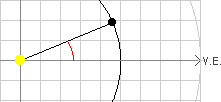 |
Hint: |
3. How long is a Tropical Year ?
|
|
Hint: |
4. Find the date and time of summer solstice 2004.
|
|
Hint: |
5. How long are the seasons ?
|
|
Hint: |
6. Find the altitude of the noon Sun at summer solstice.
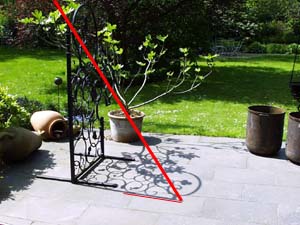 |
Hint: |
7. Determine the azimuth of the rising Sun at summer solstice.
 |
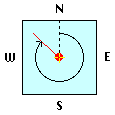 Hint: |
8. Find the date and time of perihelion 2004.
|
|
Hint: |
9. Find the date of Easter 2004.
|
1.
Find the date of spring equinox. |
Hint: |
10. Explore the Transit of Venus on 2004, June 8.
|
1.
Find the time of nearly equal geocentric longitudes of the Sun and Venus |
Hint: |
11. Explore the visibility of the inner Planets (Mercury, Venus).
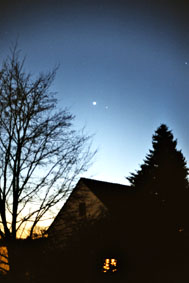 Mars and Venus |
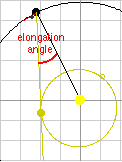 |
Hints: 1. Use the "Diagram" view, 2. Or select the "Ecliptic Zoom" view and find the dates of maximum elongation of the planet from the Sun, differentiate between morning and evening star. 3. Compare your results to the "Horizon" view. |
12. Find the duration of the longest day and the shortest of 2004 for your location.
|
|
Hints: |
13. Find the the day of earliest and latest sunrise 2004 for your location.
|
|
Hints: |
14. Find the date and time of New Moon.
|
|
Hints: |
15. Check the duration of a Synodic month.
|
|
Hint: |
16. Determine the duration of a Draconitic month.
|
|
Hint: |
17. Determine the duration of an Anomalistic month.
|
|
Hint: |
18. Explore the Total Lunar Eclipse of 2004, Oct. 28.
|
Select
the "Ecliptic Zoom" view. |
Hints: |
19. Watch the declination of the Moon and the azimuth at rise and set.
|
|
Hints: |
To be continued ...
© 2003-2007 J. Giesen